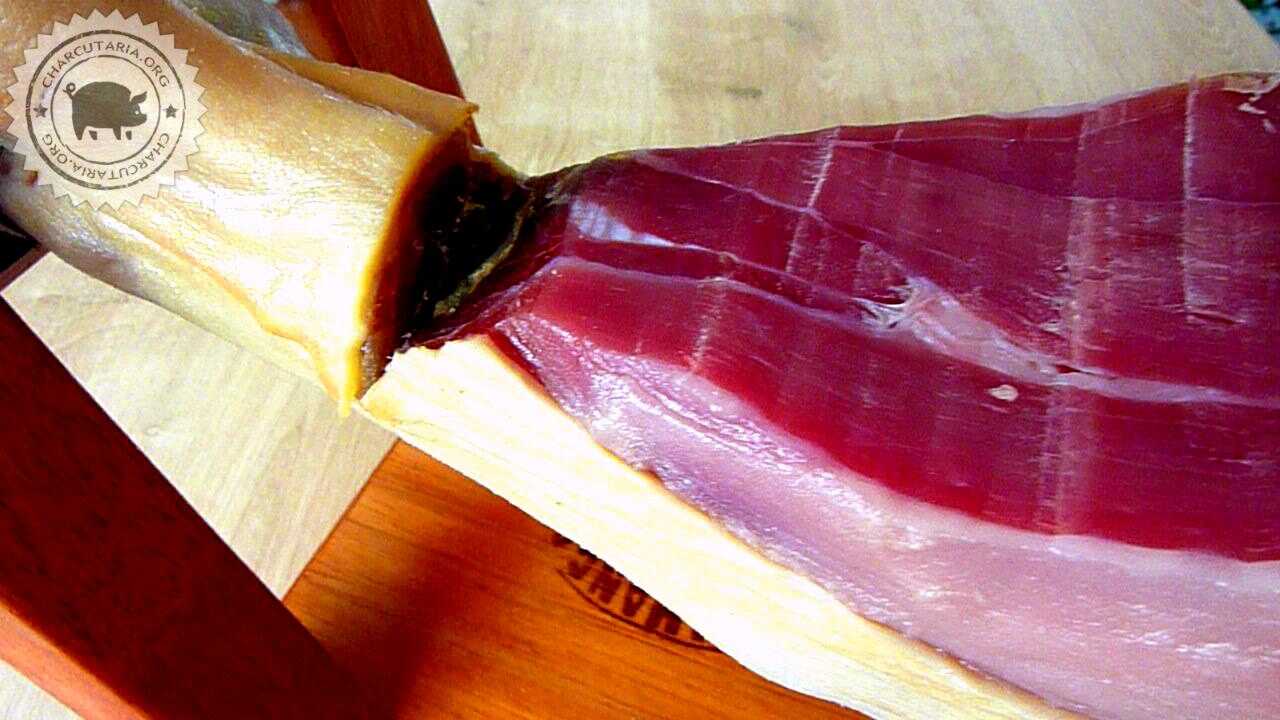
Existem diferentes tipos de presuntos espanhóis, mas os presuntos tipo Jamón Ibérico de Bellota são considerados os mais caros e exclusivos. Esses presuntos são feitos a partir de porcos Ibéricos alimentados exclusivamente com bolotas (frutos do carvalho) durante sua fase de engorda, geralmente nos meses de outono. Os porcos são criados em áreas específicas da Espanha, como a região da Andaluzia, e são abatidos e processados de maneira tradicional. O processo de maturação desses presuntos pode levar de 24 a 36 meses em ambientes controlados e é considerado uma arte que exige muito conhecimento e habilidade. O resultado é um presunto rico em sabor, com uma textura suave e aromas complexos, tornando-o um produto gourmet altamente valorizado e cobiçado. Alguns exemplos de Jamón Ibérico de Bellota considerados os mais caros incluem Jabugo, Guijuelo, Extremadura e Los Pedroches.
O processo de produção do presuntos tipo Jamón Ibérico envolve vários estágios, desde a criação dos porcos até a cura do presunto. Abaixo, estão os principais passos envolvidos na produção do Jamón Ibérico de Bellota:
Seleção dos porcos: apenas os porcos Ibéricos puros ou cruzados são utilizados para a produção do Jamón Ibérico de Bellota. Os porcos são criados em áreas específicas da Espanha, principalmente na região da Andaluzia, e são alimentados com uma dieta rica em bolotas durante a fase de engorda.
Montanera: A montanera é o período de engorda dos porcos na fase final de criação, que geralmente ocorre de outubro a fevereiro. Durante a montanera, os porcos são soltos nas florestas de carvalho e alimentados exclusivamente com bolotas, que fornecem nutrientes importantes e um sabor característico ao presunto.
Abate: Quando os porcos atingem o peso ideal, são abatidos e processados. O processo de abate é realizado de maneira cuidadosa e respeitosa, garantindo que o porco seja tratado com o máximo respeito e dignidade. O porco ibérico é abatido para produzir o presunto ibérico de bellota quando atinge a idade de cerca de 14 a 18 meses, quando já alcançou peso e desenvolveu a gordura intramuscular que é uma característica essencial do presunto ibérico de bellota. No entanto, a idade exata varia de acordo com o produtor e o padrão de qualidade que deseja alcançar.
Preparação da carne: A carne é preparada, cortada no formato correto e a pele é deixada para proteger o presunto durante o processo de cura.
Salga: O presunto é então salgado e deixado para descansar por cerca de duas semanas. O sal absorvido ajuda a preservar o presunto e a desenvolver seu sabor.
Lavagem: Após o período de salga, o presunto é lavado e seco para remover o excesso de sal. Em seguida é deixado para secar em um ambiente controlado.
Cura e maturação: O processo final de cura pode levar de 24 a 36 meses, dependendo do tamanho do presunto. O presunto é pendurado em um ambiente com temperatura e umidade controladas, permitindo que o sabor e a textura se desenvolvam lentamente. Durante o processo de cura, o presunto é virado regularmente para garantir uma cura uniforme.
O processo de produção do Jamón Ibérico de Bellota é longo e complexo, envolvendo anos de cuidado e atenção para garantir que o resultado final seja um presunto de alta qualidade, com um sabor complexo e textura suave.








